As middle schooler, I didn’t have great hygiene habits or water habits. I didn’t enjoy taking showers, especially because I was supposed to do it before going to school, when I was most sleepy. So on many a morning, I would stumble to the bathroom, turn the shower on and then catch a few extra z’s on the floor mat. I want to believe I was too young to really smell bad, but quite possibly I was the stinky kid in class and didn’t know it.
By high school my behavior had flipped, though my water habits were still pretty bad. I had started taking very long showers. At some point the shower had become my oasis. It’s where I went to find peace away from the world. To this day it still is. I go there to freeze time, to escape and/or dwell on my anxieties, to mourn, to sing, to delay the start of my work day, and also, you know, clean my body. For most of my adult life my average shower duration has been in the 10 to 15 minute range, though I’ve definitely taken some 20 minute ones.
Intellectually, I’ve known that living this way was wasteful, but I never really felt the effects of it (except for maybe dry, itchy skin). No matter how much water I used, there was always more of it as soon as I turned the tap back on. It made it hard to care about my water consumption.
Then 2019 happened. I think of it as the year when I fell in love with planet Earth. I became a vegetarian because I didn’t want to contribute to the cruelty of factory farming. I started leading a zero waste lifestyle. And I started trying to treat the planet the way I would treat a family member. That led to taking a closer look at my water habits, specifically how much I was using in the shower and how much I was flushing down the toilet. I decided to spend a month tracking my behaviors. Obviously I created spreadsheets.
August 2019 Shower Durations
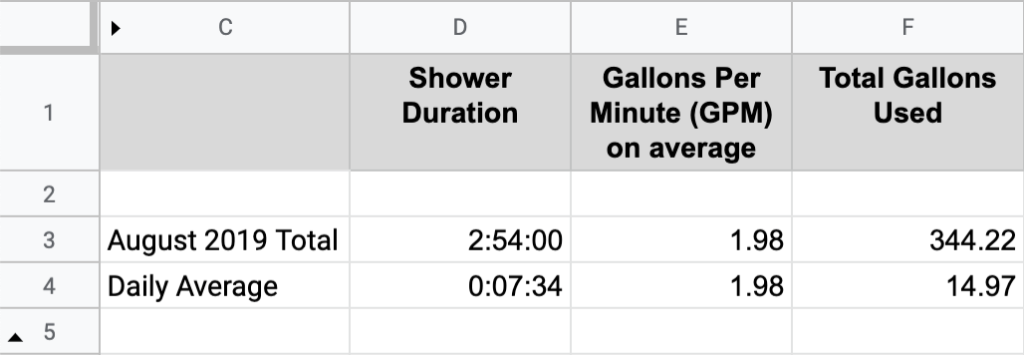
August 2019 Toilet Flushes

Here’s what I learned after a month of tracking my water habits. (Warning: potty talk coming up. And also math)
Lesson 1: Shower heads matter.
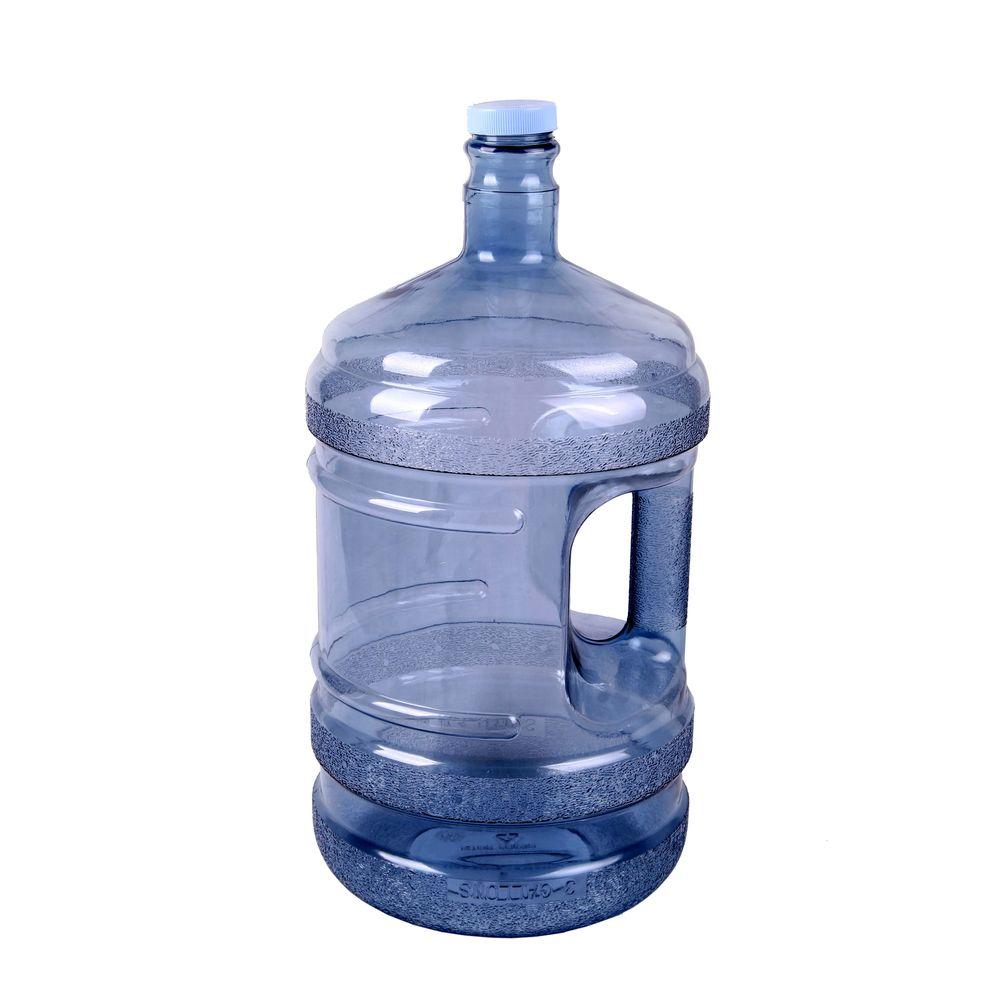 My house has two showers. One shower head has a flow rate of 2.5 gallons per minute (GPM), and the other one with is 1.75 GPM. My average shower duration was 7 minutes and 34 seconds. If I use the higher GPM shower, I consume 18.9 gallons of water on average. The same amount of time in the lower GPM shower consumes 13.2 gallons. That’s a 5.7 gallon difference. To give you a sense of scale, this water-cooler jug holds 5 gallons. After a month, I’ve saved enough water to fill this 169-gallon inflatable pool.
My house has two showers. One shower head has a flow rate of 2.5 gallons per minute (GPM), and the other one with is 1.75 GPM. My average shower duration was 7 minutes and 34 seconds. If I use the higher GPM shower, I consume 18.9 gallons of water on average. The same amount of time in the lower GPM shower consumes 13.2 gallons. That’s a 5.7 gallon difference. To give you a sense of scale, this water-cooler jug holds 5 gallons. After a month, I’ve saved enough water to fill this 169-gallon inflatable pool.
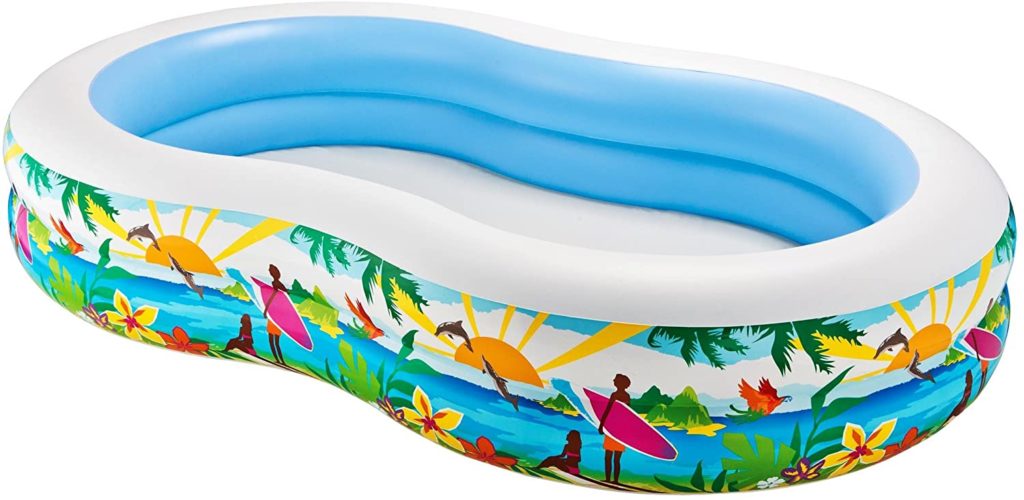
To put it another way, 5.7 gallons is enough water to keep a person properly hydrated for just over 10 days following the recommendation of 8 glasses of 8 fluid ounces of water a day.
Lesson 2: My average shower duration is pretty average.
According to Home-Water-Works.org, the average American spends 8.2 minutes in the shower. The recommended shower duration is 5 minutes. Last August I still had a ways to go. Today, my average is closer to 6 minutes.
Lesson 3: I don’t need to shower every day.
Even before the COVID 19 lock down, I had the luxury of working from home often. There were some days when I only went outside to walk my dog. On those days, showers were optional. During the lock down, this is even more true.
Lesson 4: My quality of life is still high when I take short showers.
The shower is still my oasis. In some ways I appreciate it more now that I spend less time in it.
Lesson 5: I use the bathroom a healthy amount.
According the BladderAndBowel.org, “for most people, the normal number of times to urinate per day is between 6 – 7 in a 24 hour period.” I’m on the high end of that range. As far as bowel movements go, normal is anywhere from 3 times a week to 3 times a day. Happy to report, I’m within range there too. Moving on.
Lesson 6: Skipping every other flush adds up fast.
Most of us have heard the phrase, “If it’s yellow, let it mellow. If it’s brown flush it down.” It refers to not flushing if you’ve only peed and is usually the practice in places experiencing water shortages. The average American toilet built after 1994 uses 1.6 gallons of water per flush (GPF). If you pee 6 to 7 times a day, skipping those flushes saves roughly between 9 and 11 gallons of water a day.
Now that’s not going to be super feasible for most folks. If you share a bathroom with people, then that’s multiple people letting it mellow. That’s why I try to skip every other flush. The urine doesn’t sit very long, smells aren’t an issue, and I’m still saving water.
Since I use the bathroom roughly 8 times a day, skipping 4 flushes means there’s 6.4 gallons I’m not flushing. If I keep up this behavior for a year, that’s 2,336 gallons I’ve saved. To give you a sense of scale, that’s enough to keep one person properly hydrated for 12.8 years. Or it’s enough to help 4,672 people stay hydrated for a day. It’s enough water to fill the 2000-gallon tank on this truck plus two kiddie pools.
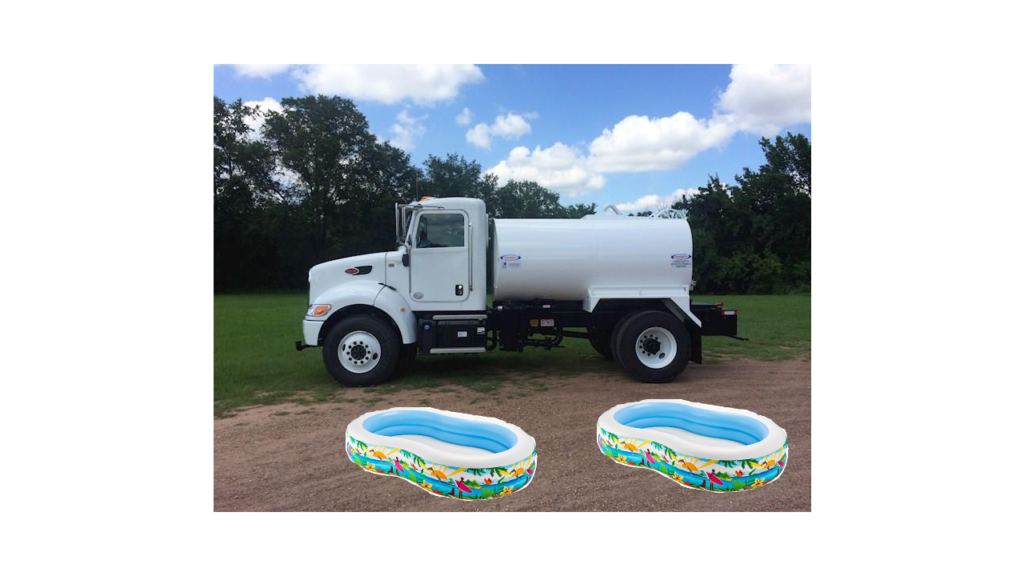
OK cool, numbers are fun and all, but it’s not like the water you rescue from the drain is going to make its way to someone who needs that water to drink. So why exactly does it matter how much water we use?
The Problem with Wasting Water
Getting water to your sink is energy intensive
The entire process of getting clean water to pour out of our sinks takes a lot of energy. Water must be extracted, either from lakes, rivers, streams or underground aquifers. Then it must be transported. Then it has to be filtered. The water that goes down our drains must also be treated so it can reenter the supply source.
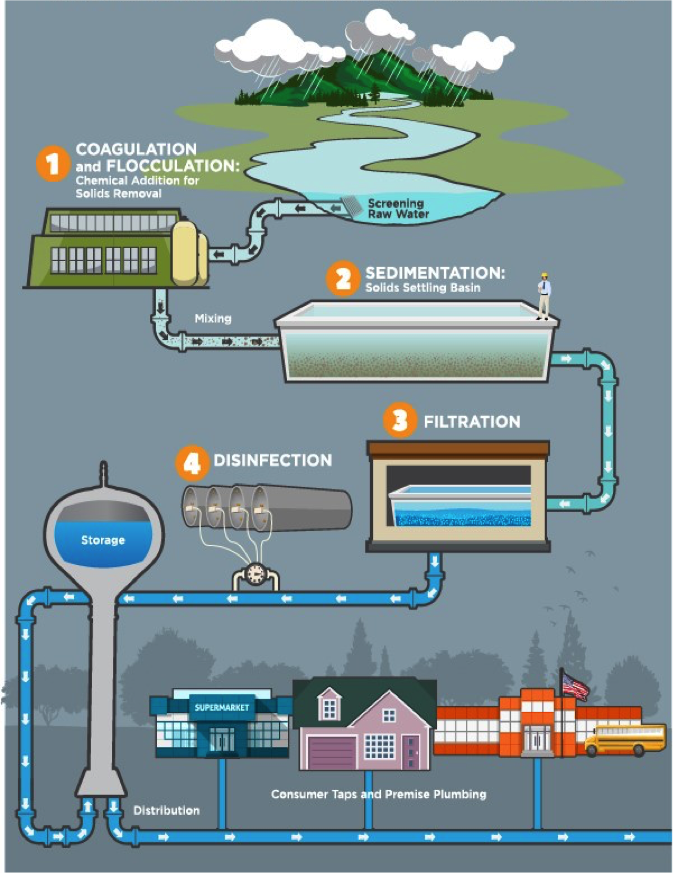
Every step of this process requires energy, and that energy usually comes from burning fossil fuels. A side effect of burning fossil fuels is the release of carbon dioxide, a major greenhouse gas. As we all know, the release of greenhouse gases contributes to global warming.
I’m not suggesting that you should worry about global warming every time you turn on your faucet. I just want us to be aware that there is an environmental cost to accessing clean, easy water. And when you conserve water, you conserve energy.
Water is a renewable resource, but only kind of
The earth has systems in place that will naturally replenish the portion of water that gets depleted by usage, as illustrated by this diagram.
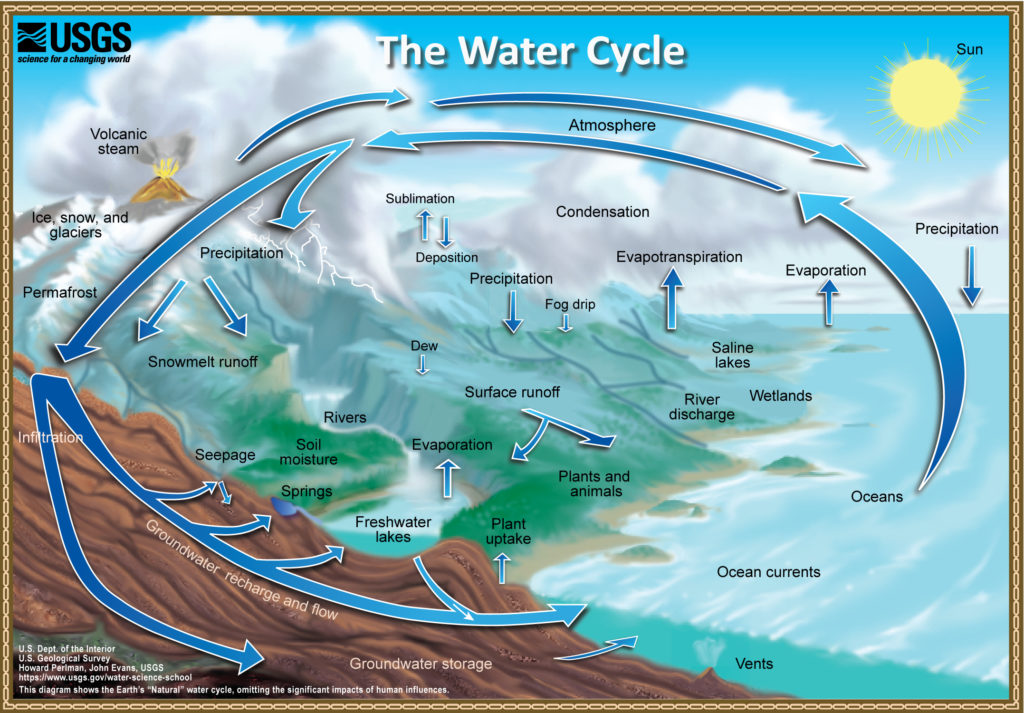
Water evaporates from the earth’s surface, rises into the atmosphere, where it cools and condenses into rain or snow in clouds, and then falls back to the surface. That water accumulates in the soil, in layers of rock and in bodies of water, from which it will evaporate and continue the cycle. This is what makes water a renewable resource.
However, water distribution is not equal across the globe. It is possible to use up all the fresh water in an area before it can be naturally replenished. If we use up all the fresh water in, say, Arizona or Libya, the planet will simply let it happen, making water a non-renewable resource at those locations.
Out of curiosity I did a little research and learned that in 2011 the state of Arizona used almost 9 acre-feet of water (an acre-foot of water is equivalent to 326,000 gallons). In the same year, the country of Libya’s total available renewable water resources was .7 acre-feet. Arizona had a population of 6.473 million in 2011, and Libya had 6.247 million. Not that you needed proof that water is not distributed evenly, but wow.
You may be familiar with the following figures:
- Roughly 71% of the planet is water.
- 2.5% of that water is fresh water.
- 68.7% of that fresh water is inaccessible as glaciers and ice caps.
- 30.1% of that fresh water is accessible as ground water.
- 1.2% of that fresh water is accessible as surface water (think lakes, rivers, streams)
Sources: How Much Water is There on Earth? and Where is Earth’s Water?
As you can see, we can only access about a third of all the fresh water that exists. If we extract that water faster than the water cycle regenerates it, we risk water shortages.
With growing population sizes, the demand for fresh water is only going to increase. Additionally, industries like agriculture, the automotive, fashion, and beverage all demand an enormous amount of water, and they’re all growing. According to the 2030 Water Research Group, which is a partnership of public, private and civil organizations aiming to sustainably manage water resources, if industry does not find significant ways to be more water efficient, by 2030 the global water demand is likely to grow to 40% more than the currently accessible, reliable supply of water. That figure will be greater than 50% in developing countries.
Check out https://www.worldometers.info/water/ for more interesting stats regarding our global water use.
Humans are not the only ones who could use that water
The more water humans use, the less there is available for other animals and plants. This “battle” for freshwater resources is exemplified by the delta smelt.
Before writing this post, I’d never heard of the delta smelt. It’s a 3-inch fish that lives in the Sacramento-San Joaquin Delta in California. In 2015 it was brought to the brink of extinction after many decades of humans diverting water away from the fish’s natural habitat to farms and homes south of the delta.
Thanks to the Endangered Species Act, a greater effort was made to protect the smelt, which involved pumping water back into the delta, instead of to farms. Many farmers saw (and still see) this as a waste of water that could be going to humans. Some have been severely affected by it, having to pull up hundreds of acres of trees, because of lack of water. Donald Trump even railed against this practice of diverting water from humans when he was campaigning for president. In April 2019 he confirmed David Bernhardt as Secretary of the Interior who began trying to roll back protections for the smelt.
It’s a balancing act. I understand that it’s hard to care about a tiny fish going extinct when your livelihood is at stake. There are no easy answers. But it’s clear to me that if we adopt habits to conserve water, we’d all be better off.
If you want to read more about the delta smelt, there are some in-depth article links at the end of this post.
Willful waste makes woeful want
Or another way you may have heard it: waste not, want not.
It means if you don’t waste what you have, you won’t be in want of what you wasted.
This has basically been my code of conduct for my entire life, even before I knew what “zero waste” was. It’s why I always took my leftovers home, and other people’s too. It’s why I’ve always had a hard time throwing broken objects away. It’s why watching a faucet flow unnecessarily makes me cringe.
It demonstrates a lack of appreciation
As a healthy, middle-class American I have so many of my physiological needs met. Maslow’s hierarchy of needs defines the most basic human needs as air, water, food, shelter, sleep, clothing and reproduction. I don’t lack for any of these, and for that I am extremely grateful. To treat what we would all die without as disposable is the height of ingratitude and disrespect.
At this point, I hope you’re thinking about your own water habits and wondering what you could do to use less water. See below for Part 2, where I provide tips for conserving water in your daily life. Thank you for reading and caring.
Why Our Water Habits Matter: Part 2 of 2
Disclaimer: I’m not a subject matter expert on any of this. I’m just a guy with a search engine and a passion for protecting the environment. In addition to the links included above, you can find the sources of my knowledge in the list below. If anything I’ve said is factually wrong, please let me know.
- Why Conserve Water if it’s Renewable? [Importance & Benefits of Conserving Water]
- Why Wasting Water Is A Much Bigger Problem Than You Think
- What Can You Do to Protect Local Waterways
- Charting Our Water Future: Economic Frameworks To Inform Decision-Making – Report by the 2030 Water Research Group
- List of countries by total renewable water resources
- Does Arizona really use less water now than it did in 1957?
The Delta Smelt: